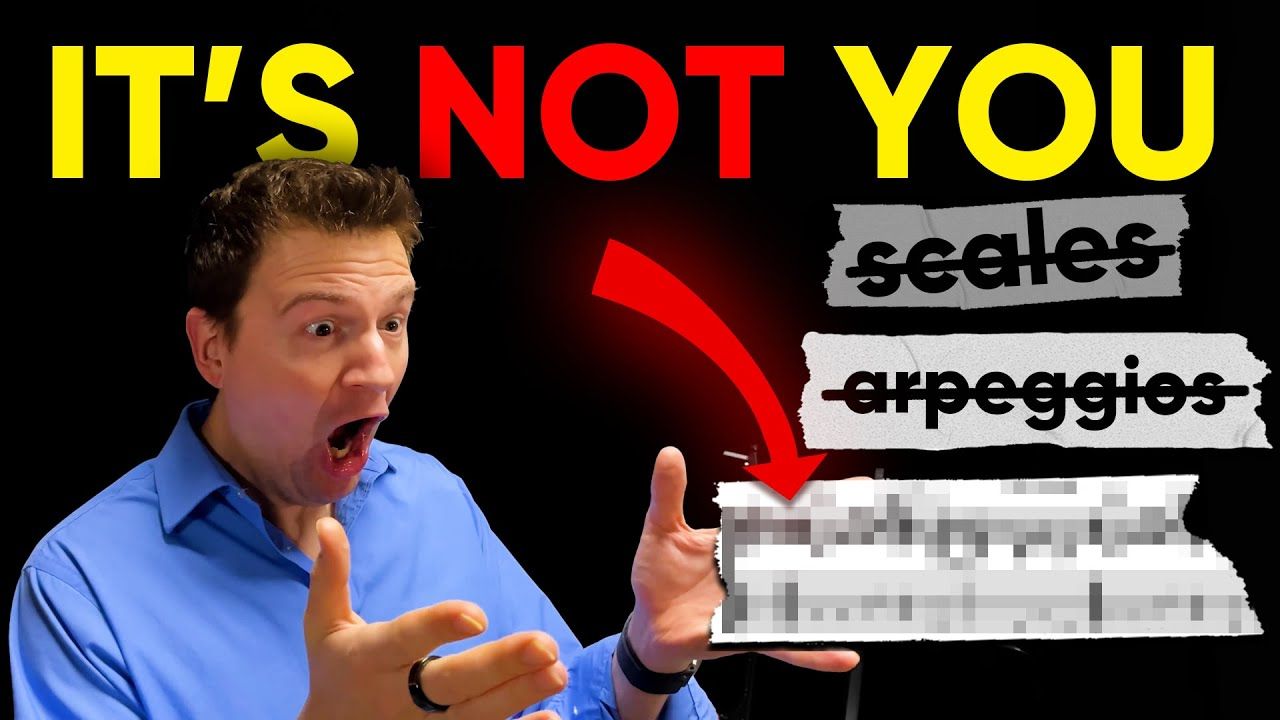
Biggest Misunderstanding About Playing Jazz Guitar
Feb 27, 2025Ever wonder why, when you pick up your guitar, it doesn’t sound like those jazz records you love? Good news—it’s not your fault. Seriously. There’s a ton of information out there that makes jazz guitar seem way more complicated than it needs to be. Fancy scales? Speed? That magical trick to unlock your jazz sound? Forget all that. The truth is much simpler, so let's break it down!
By the end of this post, you'll know exactly why you haven't nailed that jazz sound yet, and more importantly, how to fix it.
Ready? Let’s dive in.
Why You Don't Sound Like a Jazz Guitarist (Yet)
I’ve been teaching jazz guitar for over 15 years at JazzGuitarLessons.net, and this is hands-down the biggest frustration I hear from students: "I know the scales, the arpeggios, the tunes—but it still doesn’t sound like jazz!"
Sound familiar? Here’s why:
1. Your Foundation Is Wobbly
Imagine you’re building a pyramid. If you slap together a base in 10 minutes and start adding fancy stuff on top (like altered scales and super hip licks), guess what? That pyramid is going to topple over.
Most guitarists jump to the flashy stuff before locking in a solid foundation. If your jazz playing feels shaky, it’s probably because you’re missing the basics.
Solution: Focus on building a strong, simple foundation. Nail the essential chord shapes and progressions before worrying about advanced techniques.
2. You’re Missing "The Salt"
Imagine a fancy chef obsessed with molecular gastronomy but has never tasted salt. Weird, right? Without salt, no matter how fancy the dish, it’ll be bland.
Jazz is the same way. If you don’t recognize core sounds (like a diminished chord) in 25 or 100 different songs, you’ll never feel the music. You need to internalize these sounds in multiple contexts.
Solution: Play actual jazz tunes. Lots of them. The context of real songs is what makes those sounds stick.
The 5-Step System to Finally Sound Like a Jazz Guitarist
Here’s the exact step-by-step method that works for my students (and it’ll work for you, too).
Step 1: Simplify Your Chords
Jazz chords can look terrifying. Minor 7(b5), #9, b13—yikes! But here’s the secret: you only need four basic chord families.
-
Major
-
Minor
-
Dominant
-
“Other” (like diminished or half-diminished)
Action Step: Learn ONE voicing for each family. That’s it. For help, grab my free Staple Chord Cheat Sheet, which gives you easy shapes to cover 80% of jazz standards.
Step 2: Get in Time
Jazz lives and dies by rhythm. You can know every chord and scale, but if your timing is off, it won’t swing.
Think of rhythm as a conveyor belt moving under your fingers. The music keeps moving, and your job is to stay on that belt.
Action Step: Practice your staple chords with solid rhythms. Try simple patterns like Charleston or quarter-note comping, and always count out loud.
Step 3: Play the Tune
If someone at a party asks you to play something, don’t give them scales—play a song!
A full-blown chord-melody arrangement might feel overwhelming, but you can do a minimalist version. I call it the thin chord-melody approach—play the melody and sneak in simple chord tones underneath.
Action Step: Pick a jazz standard and start blending melody and chords. Keep it simple!
Step 4: Make the Changes
Jazz soloing isn’t about shredding in a key like blues or rock. It’s about outlining the chord changes.
Here’s an easy way to start: land on the 3rd of each chord on beat one. This tiny shift instantly makes your lines sound like jazz.
Action Step: Practice hitting the 3rd of every chord in a tune. Once you’ve got that, approach the 3rd from a note above or below for extra flair.
Step 5: Simulate a Jam Session
At a real jam, you don’t have time to overthink. You need to play through a tune confidently from start to finish.
I use a practice method called the Four-Chorus Exercise:
-
Play the melody (chord-melody style)
-
Comp (with the rhythms from Step 2)
-
Solo (using the 3rd-targeting method from Step 4)
-
Play the melody again
Action Step: Pick a standard and run through all four choruses. Record yourself and listen back—you’ll hear your progress loud and clear.
Your Next Step: Lock It In
If you work through these five steps on 5-15 jazz standards, you’ll transform your playing. No more guessing. No more confusion. Just real, authentic jazz guitar.
Want some help? I’ve got a free community where you can post videos, ask questions, and get access to detailed training on tunes like "Stella By Starlight." Plus, you can download the Staple Chord Cheat Sheet and other resources to fast-track your progress.
Click below to join the Fellowship community for free and start making real jazz guitar progress today.
See you inside!
Marc @ JazzGuitarLessons.net









